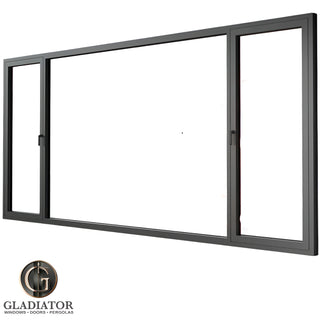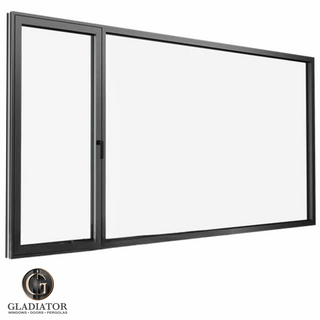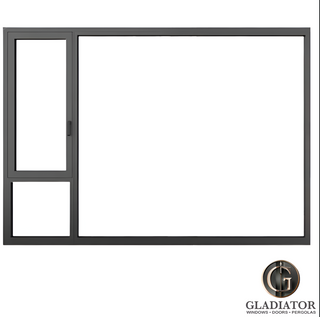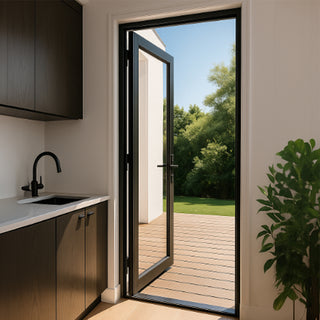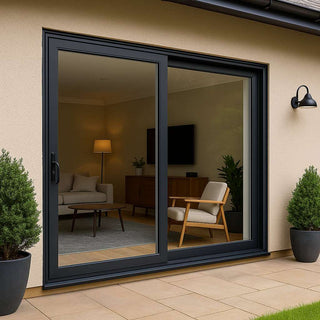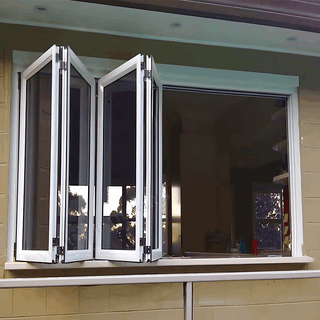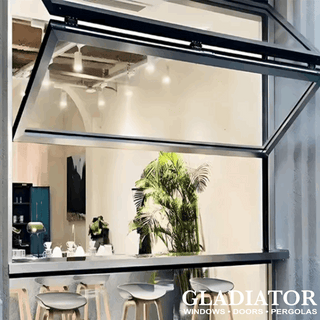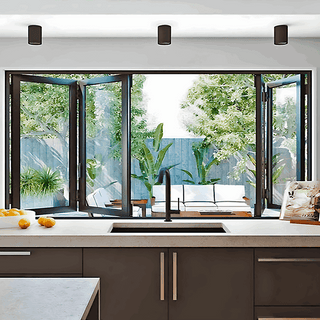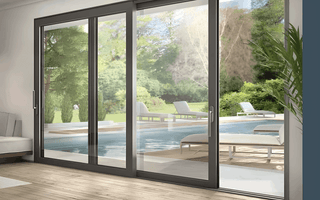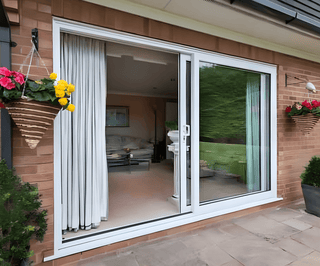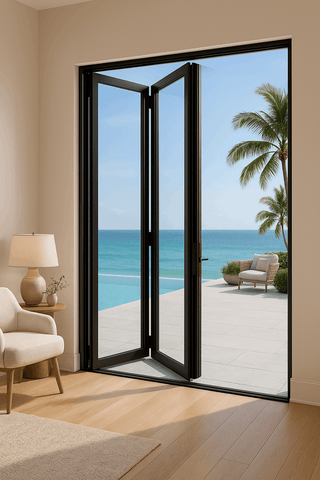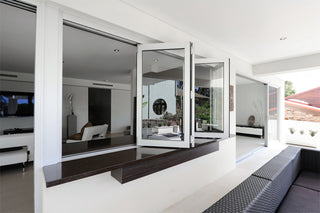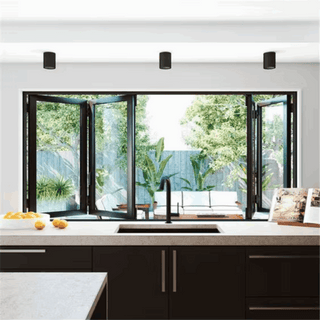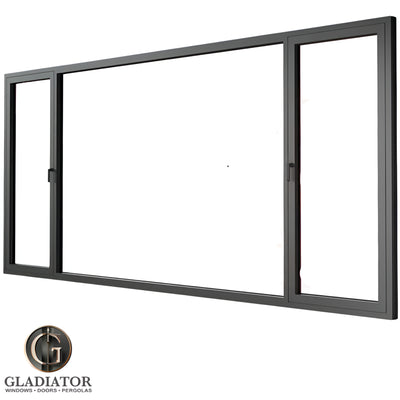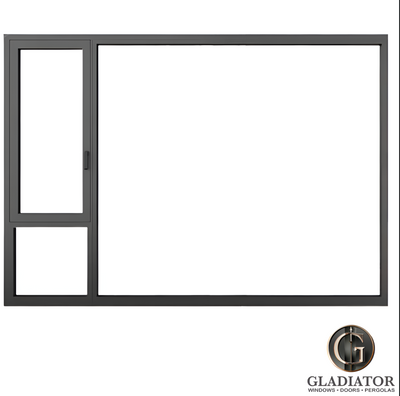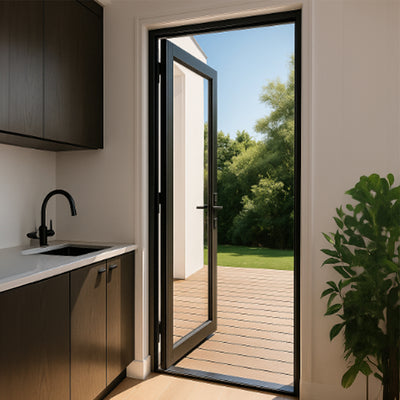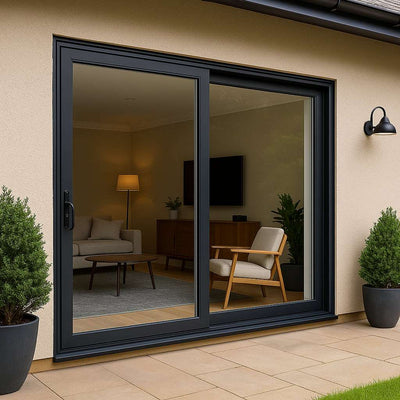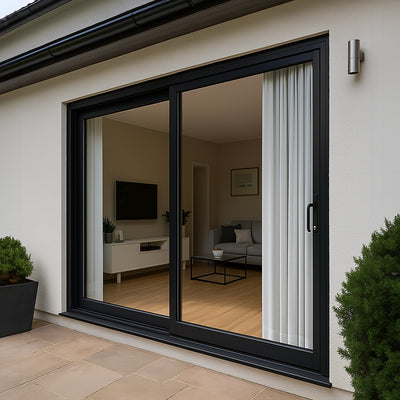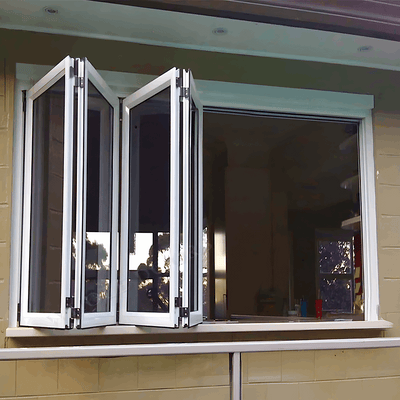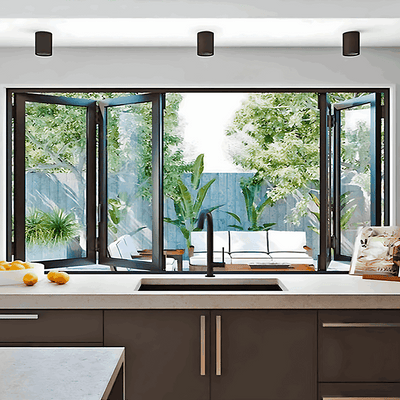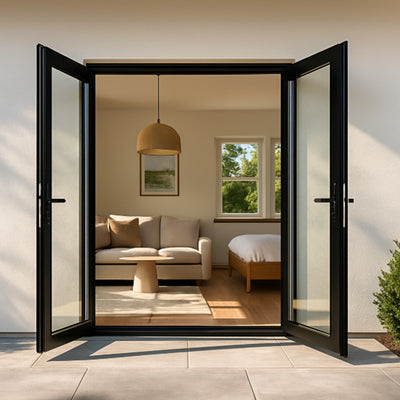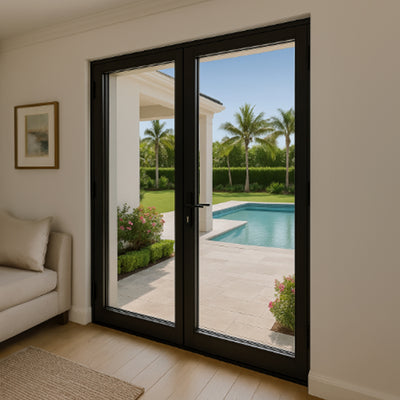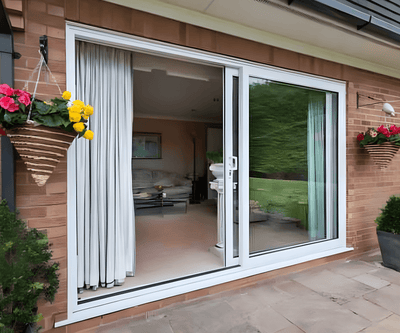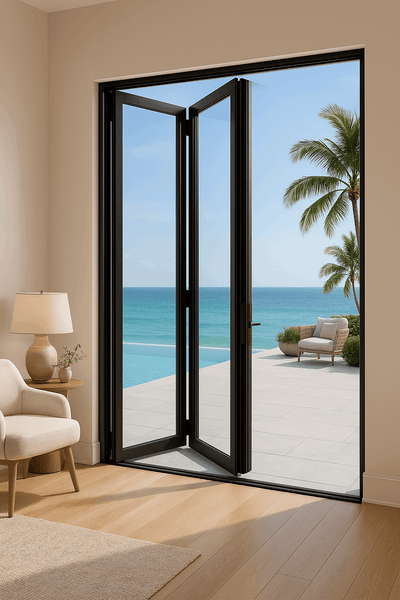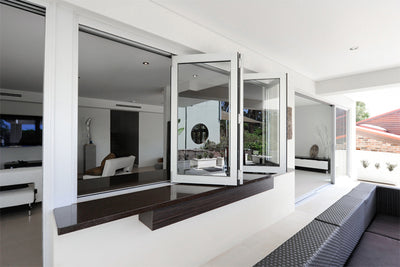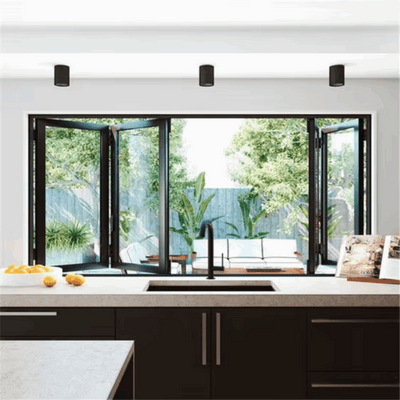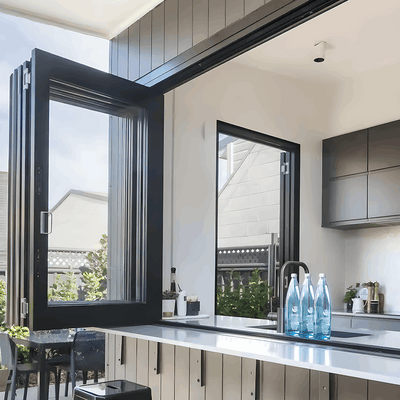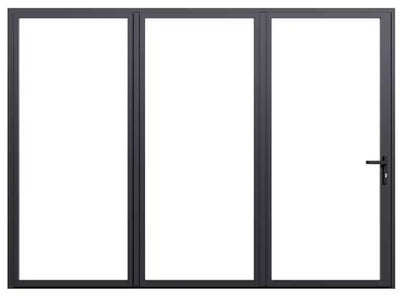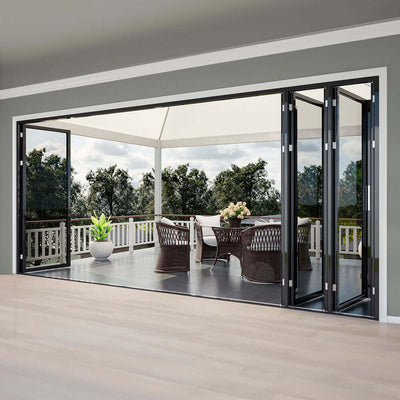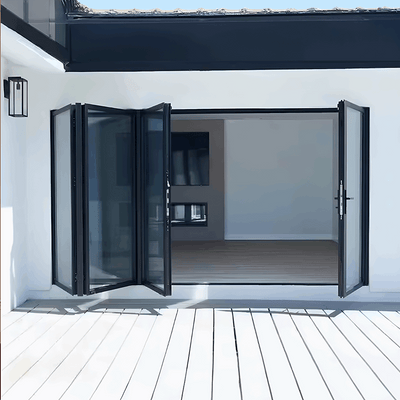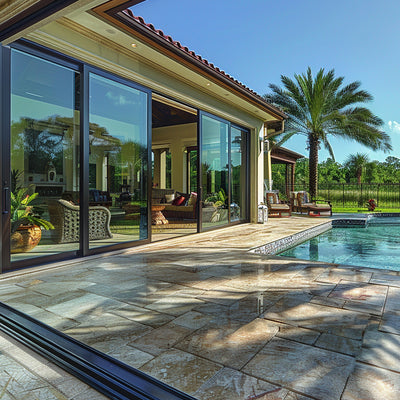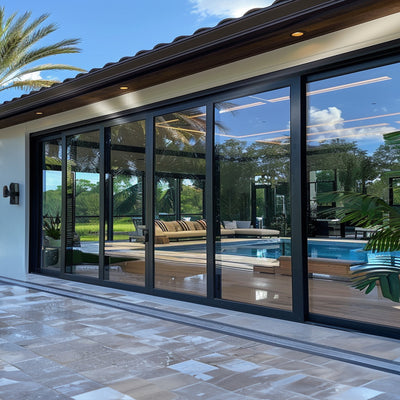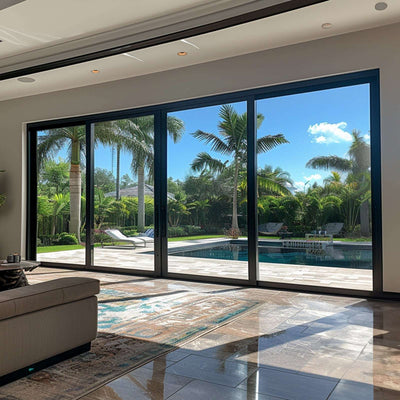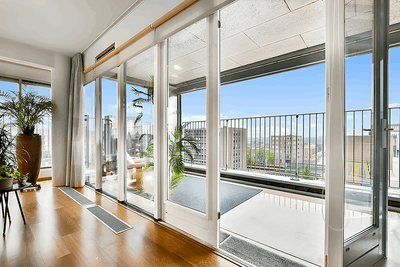The Door Adjustment Fundamentals You Need to Know
Let's be honest, a door that sticks, scrapes, or won't latch is incredibly annoying. Understanding the basics of your door's operation can empower you to fix these problems yourself. This section breaks down door mechanics in a practical way, just like experienced carpenters explain things after years in the field. We'll cover essential concepts, from the impact of hinge placement on smooth operation to how crucial jamb alignment is for a perfect fit.
Understanding the Door System
Think of your door system as a series of interconnected parts. The jamb, the frame around the door, is the foundation. The hinges act as pivots, enabling the door to swing open and closed. The strike plate, the metal plate on the jamb, houses the latch bolt, securing the door when closed. Diagnosing a problem starts with understanding how these parts work together. For instance, a misaligned jamb can cause the door to rub against the frame, resulting in sticking.
Diagnosing Common Door Issues
Several things can make a door shift out of alignment. Seasonal changes can cause wood to expand or contract, impacting the fit. Over time, foundation settling can move the jamb. Years of use can also wear down components. Pinpointing the root cause is the first step towards a lasting fix. This means tightening a loose screw might not solve the problem if the real issue is a misaligned jamb.
The Growing Door Market
Adjusting a door often involves understanding the larger context of the door market, a major global industry. The global doors market is expected to grow from $150.52 billion in 2024 to $164.69 billion in 2025, a 9.4% compound annual growth rate (CAGR). This growth is driven by construction, renovations, and increased emphasis on energy efficiency. As the demand for doors increases, knowing how to adjust existing doors becomes even more valuable. You can find more in-depth statistics in the doors-global-market-report.
Mastering Adjustments: Hinges and Strike Plates
Adjusting the hinges is frequently the solution for a sagging or sticking door. Small adjustments to the screws can have a big impact. The strike plate's alignment is also essential for proper latching. Sometimes, a minor repositioning can solve a latching problem. Regular website maintenance can help avoid future issues, just like regular door maintenance. By understanding these basic adjustments, you can confidently address many common door issues.
Tool Arsenal: What You Actually Need for Perfect Doors
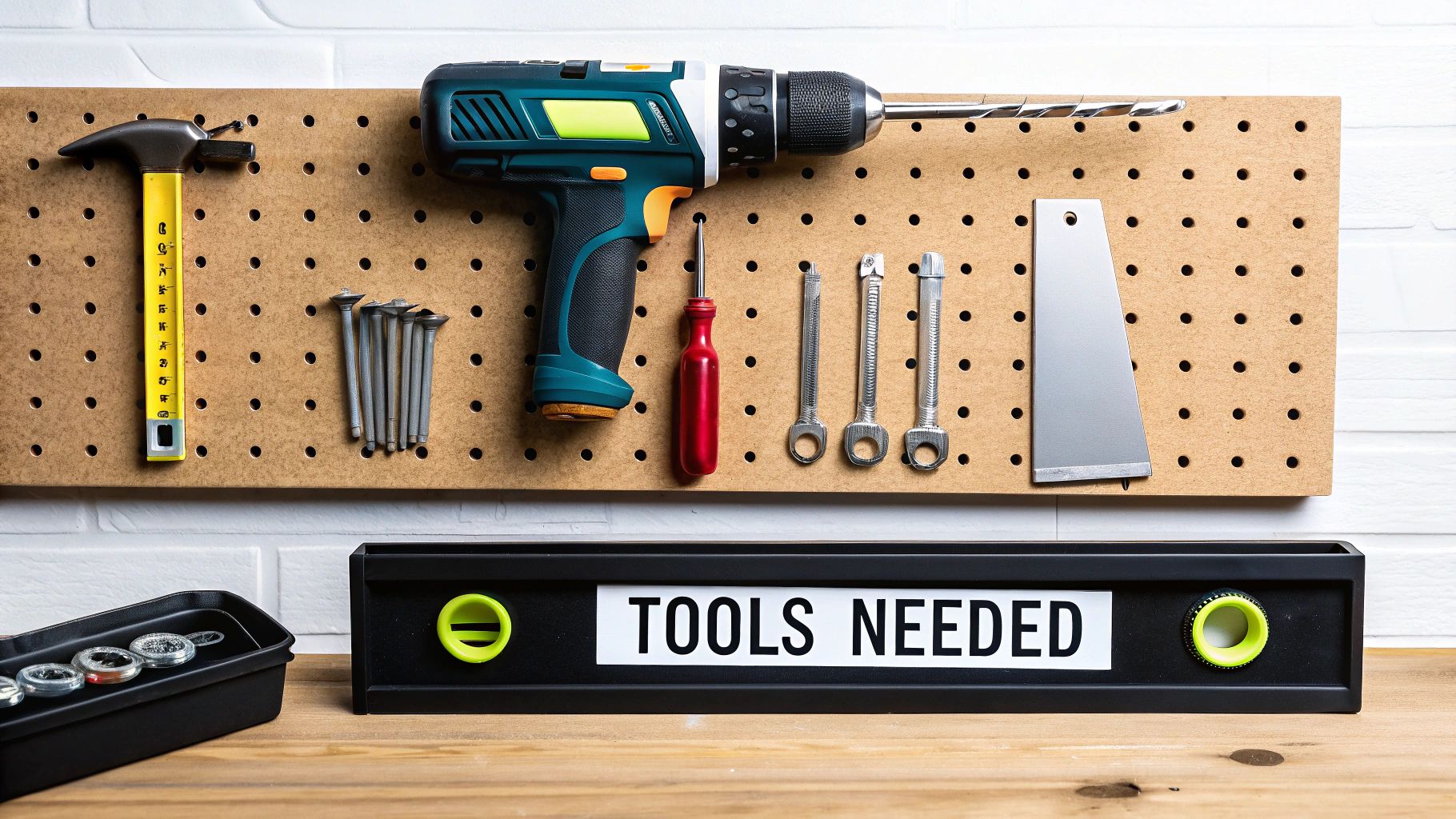
Having the right tools is essential for adjusting a door effectively. This section will guide you through assembling the ideal toolkit for a smooth and successful door adjustment. We'll cover the basics and introduce specialized tools that can make a real difference.
Essential Tools for Every Homeowner
For most adjustments, a few key tools will do the job. A high-quality screwdriver set with various sizes and head types (Phillips and flathead) is essential. This allows you to handle the different screws commonly found on doors and hinges. A hammer is also helpful for tapping hinge pins or gently adjusting the strike plate. Don't forget a level to ensure proper door alignment, both vertically and horizontally. It's a great way to spot a sagging door, a frequent issue requiring hinge adjustment.
Specialty Tools for Advanced Adjustments
While basic tools cover most scenarios, some specialized tools simplify complex adjustments. Hinge shims are thin, tapered pieces, often plastic or metal, used for precise hinge adjustments. They correct minor misalignments and ensure a snug fit. A simple wooden wedge can also be surprisingly useful. It temporarily supports the door during hinge adjustments, preventing sagging. For more involved tasks, consider specialized screwdrivers designed for tight spaces or with magnetic tips.
Measurement Tools for Precision
Accurate measurements are key. A measuring tape helps determine the correct spacing between the door and the jamb. A standard gap is about 1/8 inch. A combination square helps verify that the jamb and door are at a right angle, ensuring proper alignment. Even small deviations from 90 degrees can cause sticking or binding.
Choosing the Right Tools
When selecting tools, consider quality and durability. Investing in well-made tools ensures they last. Choose tools that are comfortable to handle, making the job much easier. Finally, consider versatility. Multi-purpose tools save you money and space, while specialized tools offer greater precision.
To help you choose the right tools, we've put together a handy comparison table:
Essential Door Adjustment Tools Comparison: A comprehensive comparison of must-have tools for door adjustment projects, highlighting their uses, approximate costs, and skill level required.
| Tool Name | Primary Use | Approximate Cost | Skill Level Required | Versatility Rating |
|---|---|---|---|---|
| Screwdriver Set | Tightening/loosening screws | $10-$30 | Beginner | High |
| Hammer | Tapping hinge pins/adjusting strike plate | $5-$15 | Beginner | High |
| Level | Checking door alignment | $10-$20 | Beginner | Medium |
| Hinge Shims | Precise hinge adjustment | $5-$10 | Intermediate | Low |
| Wooden Wedge | Supporting the door during adjustments | $1-$5 | Beginner | Medium |
| Measuring Tape | Measuring gaps and distances | $5-$15 | Beginner | High |
| Combination Square | Checking angles | $10-$20 | Intermediate | Medium |
This table provides a quick overview of the essential tools, their uses, costs, and the skill level required to use them effectively. Investing in the right tools will make your door adjustment projects easier and more successful.
With the right tools, you're prepared to tackle any door adjustment and ensure smooth operation. Next, we'll explore specific techniques for fixing a sagging door.
Conquering the Sagging Door: Hinge Techniques That Work
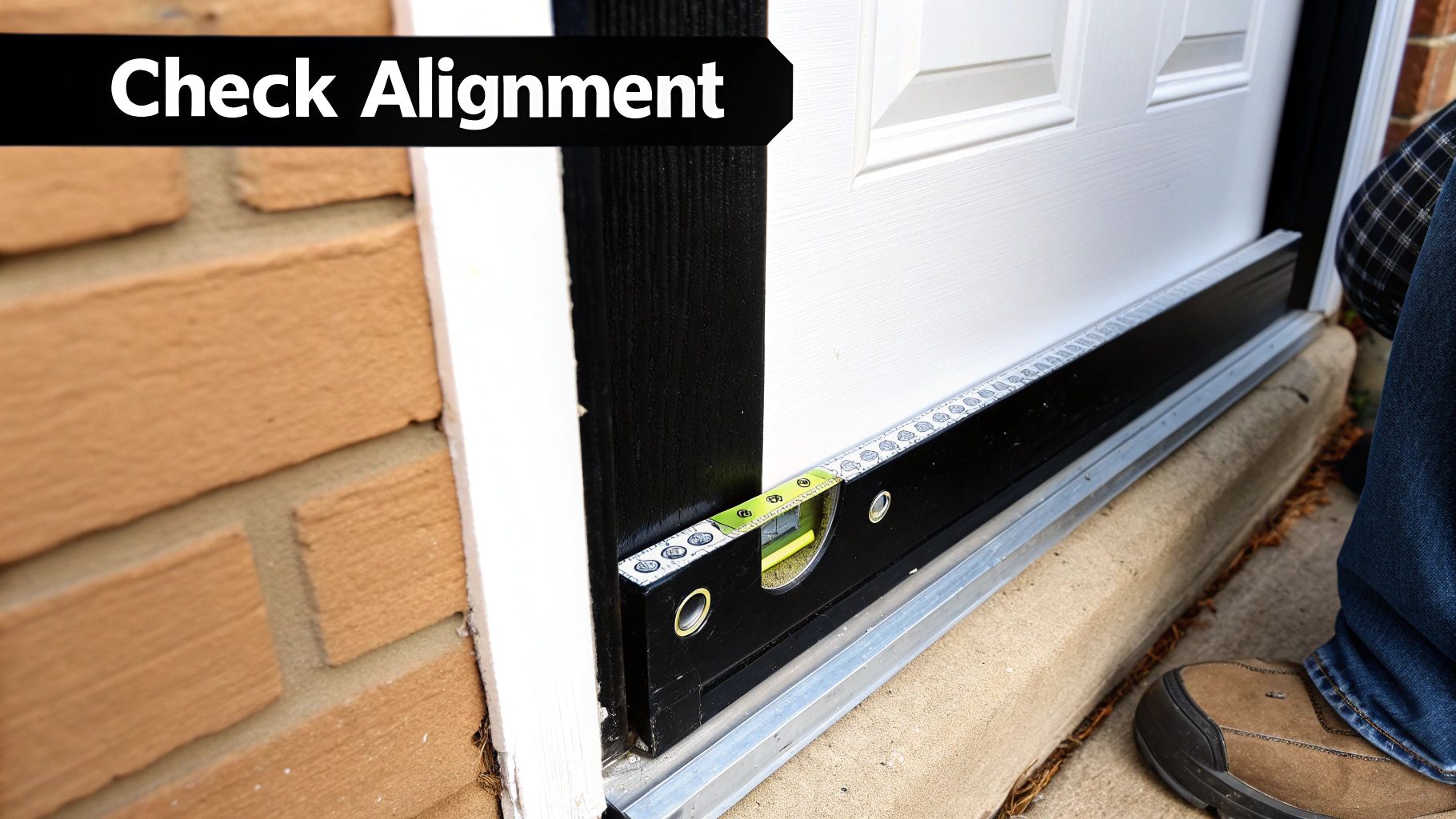
That annoying scrape of a sagging door against the floor is a surprisingly common issue. Luckily, it’s often a simple fix. This section explores proven hinge adjustment techniques used by restoration experts working on century-old homes. These time-tested methods will empower you to tackle even the most stubborn sagging doors.
Diagnosing the Problem Hinge
Before adjusting anything, it's essential to identify the problematic hinge. Open and close the door, observing carefully. Look for gaps between the door and the jamb, or loose screws. Often, the offending hinge will show visible signs of stress. Listening for creaks or groans coming from a specific hinge can also help pinpoint the source of the problem.
Micro-Adjustments for Maximum Impact
After identifying the troublesome hinge, it's time to make some adjustments. Surprisingly, small changes can have a big impact. Start by tightening any loose screws. Be careful not to overtighten, as this can strip the screw holes and make the problem worse. If tightening alone doesn't fix the sag, you might need to use shims.
The Art of Hinge Shimming
Hinge shims are thin pieces of material placed behind the hinge leaves to adjust the door's position. Begin by slightly loosening the hinge screws. Insert shims as needed, using thicker shims where the gap between the door and jamb is largest. Once the door is aligned, tighten the screws securely, ensuring the shims stay put.
Considering Weight Distribution and Materials
Weight distribution plays a significant role, and different door materials react differently. A heavy solid wood door puts more stress on hinges than a lighter hollow-core door. Understanding your door type is crucial. A solid wood door might need heavier-duty hinges or extra shims. The door hinges market itself is constantly evolving. The global market reached USD 9.5 billion in 2024 and is projected to grow at a CAGR of over 4.8% between 2025 and 2034. This growth reflects the increasing need for durable, efficient hinges crucial for precise adjustments.
Supporting the Door During Adjustments
When dealing with a severely sagging door, always support it properly during adjustments. This prevents further damage and ensures accurate alignment. A simple wooden wedge placed under the door can provide sufficient support, protecting both the door and its frame. With these techniques and attention to detail, you can conquer that sagging door and restore its smooth operation.
Strike Plate Secrets: Making Doors Close Perfectly
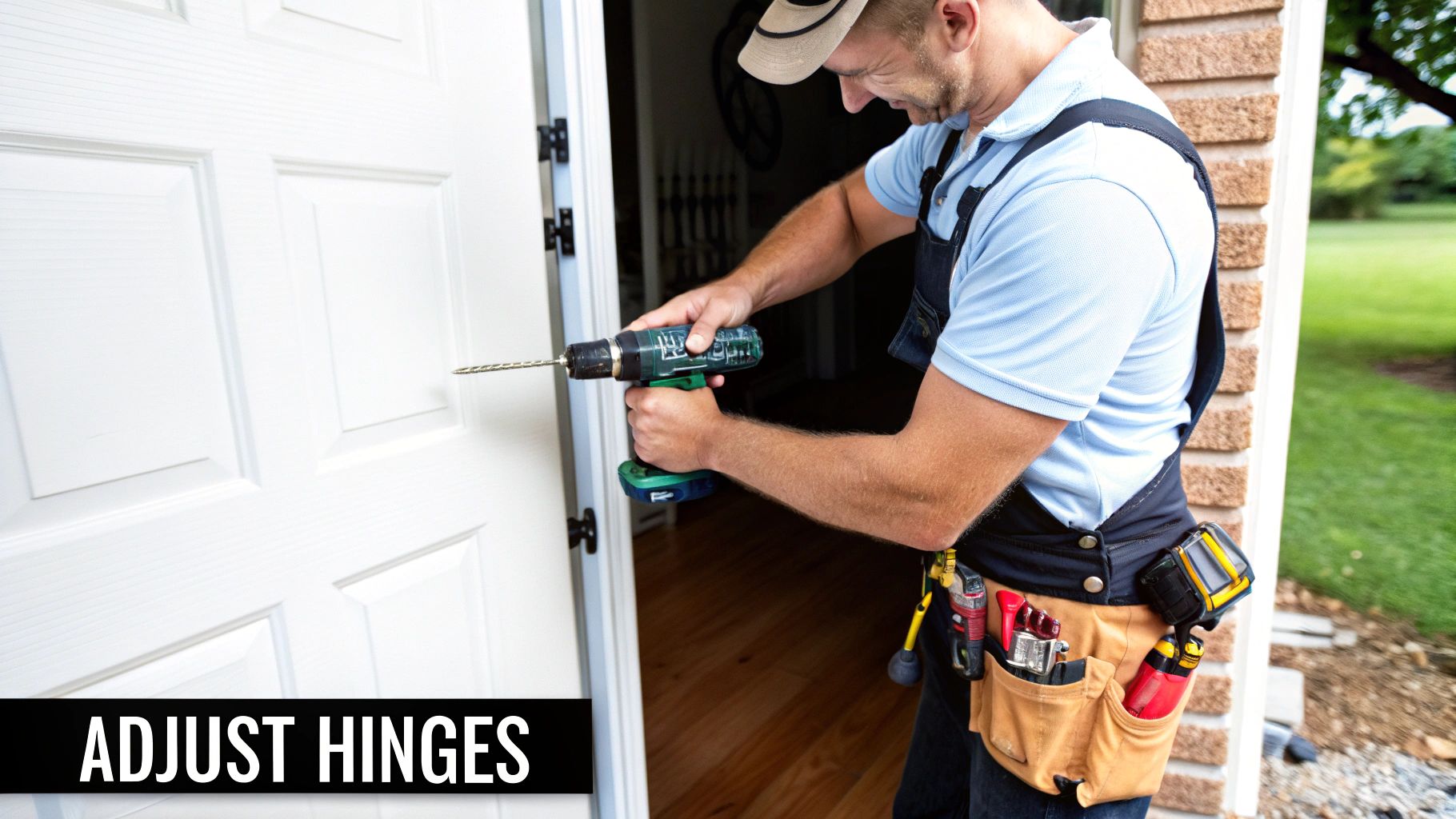
That annoying click-and-release of a door latch is a familiar sound of frustration in many homes. This section explores the often-overlooked importance of strike plate adjustment. We'll move beyond the basics, incorporating insights from security professionals and locksmiths to guide you toward achieving a perfectly closing door.
Why Strike Plate Placement Matters
The precise placement of your strike plate significantly influences several key aspects of your door's performance. First and foremost, it directly impacts security. A correctly aligned strike plate ensures the latch bolt engages fully, creating a more secure barrier against forced entry.
It also plays a crucial role in energy efficiency. A properly fitted strike plate minimizes air gaps, reducing drafts and improving temperature control. This translates to lower energy bills and a more comfortable living environment.
Finally, proper strike plate placement enhances door longevity. By reducing stress on the latch and the surrounding wood, it helps prevent premature wear and tear, extending the lifespan of your door.
Matching Latch and Strike Plate
Different latch mechanisms require specific strike plate configurations. For instance, a deadbolt latch needs a deeper and more robust strike plate than a standard door latch. Using the incorrect strike plate can compromise both the security and functionality of your door.
The depth of the strike plate is also a critical factor. Professionals typically aim for a depth that allows the latch bolt to fully extend into the strike plate, generally around 1 inch. This ensures a secure and stable closure.
The Power of Small Adjustments
Even minor adjustments, as small as 1/16 of an inch, can drastically improve how a door closes. If your door is binding slightly, a small adjustment to the strike plate can often eliminate the friction. This seemingly insignificant tweak can transform a sticky, difficult door into one that closes smoothly and quietly. A sagging door often points to an issue with the hinges. Understanding the various hinge options can be beneficial.
Marking and Filing for Precision
When installing a new strike plate or repositioning an existing one, accurate marking is essential for a perfect fit the first time. Use a sharp pencil to precisely mark the location of the latch bolt on the door jamb. This ensures the strike plate aligns correctly with the latch, eliminating the need for further adjustments.
In older homes, particularly those susceptible to seasonal movement or settling, minor filing adjustments to the strike plate can be necessary. Carefully filing the edges of the strike plate creates the clearance needed for smooth latch engagement.
Professional Techniques for a Perfect Fit
Beyond basic adjustments, experienced professionals utilize specialized techniques to ensure a flawless fit. They often use shims to fine-tune the strike plate's depth, compensating for slight variations in the door jamb's surface.
They also consider the effect of weather stripping on the door's closing action, adjusting the strike plate as needed to maintain a tight seal against the elements. Mastering these techniques can transform a troublesome door into a smoothly operating entryway.
Door Type Mastery: Specialized Techniques That Transform

This infographic illustrates the optimal clearances for a correctly adjusted door. Notice the 3mm at the top, 2mm at the sides, and the suggested hinge turn increments of 0.25 turns. These seemingly minor measurements have a major impact on your door's performance. Maintaining these clearances ensures smooth operation and prevents sticking.
Not all doors are the same. Adjusting a solid wood front door differs greatly from adjusting a lightweight hollow-core interior door. Factors like humidity also play a role, affecting different materials in unique ways. Wood, for example, expands and contracts with humidity changes, while engineered materials like fiberglass are less affected. Let's explore the specific techniques required for various door types.
Exterior Door Adjustments
Exterior doors, especially those exposed to the weather, pose unique challenges. Weatherstripping, vital for insulation and energy efficiency, can impact how the door fits within the jamb. Security is also paramount for exterior doors, making precise adjustments to the latch and strike plate critical. Tight tolerances between the door and frame are essential for both security and weather resistance.
Interior Door Adjustments
Interior doors generally experience fewer temperature and humidity fluctuations. However, their lighter construction can make them susceptible to warping or twisting. Precise hinge adjustments are often needed to maintain alignment and prevent sticking. Shimming a hinge, for instance, can rectify minor misalignments and restore smooth door operation.
Sliding and Pocket Doors
Sliding and pocket doors operate on tracks and rollers. Adjustments typically involve ensuring the rollers are clean, lubricated, and correctly aligned on the track. Pocket doors, which slide into a wall cavity, can present more complex hardware access and adjustment. Correct track and roller adjustments are key for smooth, quiet operation.
Bifold Doors
Bifold doors depend on a system of hinges and a counterbalance mechanism. This system requires proper adjustment and lubrication to prevent binding. The alignment of individual panels must also be synchronized for seamless folding and unfolding.
Material-Specific Considerations
Your door's material significantly influences its response to environmental changes and wear. Solid wood doors require different adjustments than metal or fiberglass doors. Understanding your door material's properties, like its expansion and contraction rate, is crucial. Solid wood doors, for instance, may need seasonal adjustments to account for humidity changes.
To help you navigate these adjustments, we've created a handy guide:
Door Type Adjustment Guide
This table provides a comprehensive reference for common door adjustment issues, methods, and difficulty levels by door type.
| Door Type | Common Issues | Adjustment Methods | Tools Required | Difficulty Level |
|---|---|---|---|---|
| Solid Wood Exterior | Sticking due to humidity, latch misalignment | Tightening/loosening hinges, adjusting strike plate | Screwdriver, chisel | Medium |
| Hollow-Core Interior | Warping, sticking | Shimming hinges, planing door edge | Screwdriver, shims, plane | Easy |
| Sliding Door | Roller misalignment, sticking | Adjusting roller height, cleaning track | Screwdriver, lubricant | Easy to Medium |
| Pocket Door | Roller issues, track misalignment | Adjusting track and rollers | Screwdriver, specialized tools | Medium to Hard |
| Bifold Door | Binding, uneven panel alignment | Adjusting hinge screws, lubricating hinges | Screwdriver, lubricant | Medium |
| Fiberglass Exterior | Minor latch misalignment | Adjusting strike plate | Screwdriver | Easy |
| Metal Exterior | Hinge wear, latch issues | Replacing hinges, adjusting latch and strike plate | Screwdriver, drill, replacement hinges | Medium to Hard |
This table highlights the variety of adjustments needed for different door types. From simple lubrication to more complex hardware adjustments, understanding your door's specific needs ensures proper function.
Adjusting doors is a vital part of building upkeep. The global garage and overhead doors market is projected to rise from $7.27 billion in 2024 to $7.66 billion in 2025, demonstrating a CAGR of 5.4%. This growth highlights the significance of proper door adjustments across diverse sectors. Learn more about this expanding market in the garage door market report. By understanding the unique needs of various door types and materials, you can transform troublesome doors into smoothly operating parts of your home.
Beyond the Fix: Maintenance Secrets & Professional Insights
Adjusting a door is a valuable skill. But truly mastering doors means understanding long-term maintenance. This section explores preventative techniques used by professionals, from experienced installers to the maintenance crews at luxury hotels where perfect door operation is essential.
Preventative Maintenance: The Key to Long-Term Performance
Just like regular car maintenance prevents breakdowns, consistent door maintenance prevents common issues. This proactive approach saves time, money, and frustration. A well-maintained door can function perfectly for decades, increasing your home's value and convenience.
The Seasonal Adjustment Schedule
Many professionals suggest a seasonal adjustment schedule, especially in climates with fluctuating temperatures and humidity. For instance, checking and adjusting doors in spring and fall can compensate for wood expansion and contraction in areas with humid summers and dry winters. This prevents sticking, binding, and other problems.
Early Warning Signs: Spotting Trouble Before It Starts
Recognizing early warning signs can prevent minor issues from becoming major repairs. A slight squeak, a subtle drag against the frame, or a latch that doesn't catch immediately can all indicate a developing problem. Addressing these early can save a lot of trouble later.
The Five-Minute Maintenance Routine
A simple five-minute maintenance routine can prevent 90% of common door problems. This routine might include:
- Checking for loose screws and tightening them
- Lubricating hinges with the right lubricant
- Cleaning the track of sliding doors
- Ensuring the latch bolt engages fully with the strike plate
This quick check-up, done every few months, can significantly extend the lifespan of your doors and hardware.
Lubrication: Choosing the Right Product
The right lubricant is crucial. Some lubricants work well, while others attract dirt and dust, creating more problems. Silicone-based lubricant is generally a good choice for most door hardware. It provides long-lasting lubrication without attracting debris. Avoid oil-based lubricants, which can become sticky over time.
Weather Stripping and Door Operation
Weather stripping is vital for energy efficiency, but it also affects door operation. As it compresses, it can create friction against the door jamb, making the door feel tight. Regularly check your weather stripping for wear and replace it as needed to maintain both energy efficiency and smooth operation.
Knowing When to Call a Professional
While many door adjustments are DIY projects, some require a professional. Significant structural problems, complex hardware issues, or door damage are best left to experts. Don't hesitate to contact a qualified contractor for problems beyond your expertise. They can accurately diagnose the issue and provide the correct solution, saving you time and preventing further damage.
Finding a Quality Door Professional
When choosing a professional, look for signs of expertise. Ask about their experience with various door types and materials. A knowledgeable professional will be familiar with diverse door systems. Inquire about their diagnostic approach and preferred repair methods. A quality professional takes time to understand the issue before recommending a solution. Finding a reliable and experienced professional, like those at Gladiator Windows and Doors, ensures the job is done right.
Looking for durable, stylish doors? Visit Gladiator Window and Doors for custom-made doors, expert advice, and competitive prices. Upgrade your home with doors that enhance its beauty and function.


















